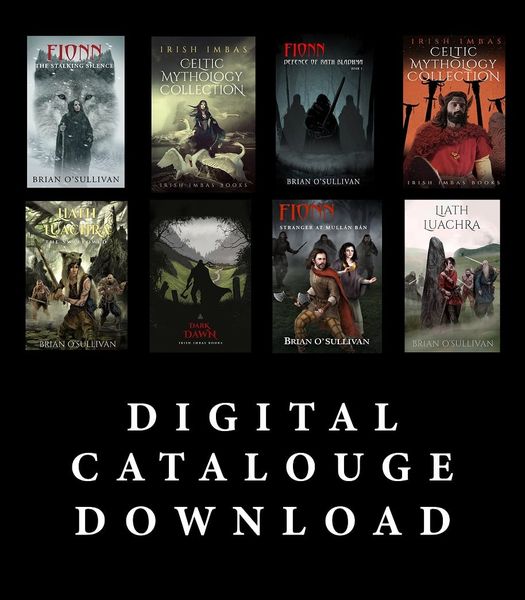
It’s already been a year since I released the first ‘Irish Imbas Catalogue’, but of course its already out of date!
In any case, if you want to know a little more about what I do and why I do it, you can find it here: Irish Imbas Catalogue

It’s already been a year since I released the first ‘Irish Imbas Catalogue’, but of course its already out of date!
In any case, if you want to know a little more about what I do and why I do it, you can find it here: Irish Imbas Catalogue
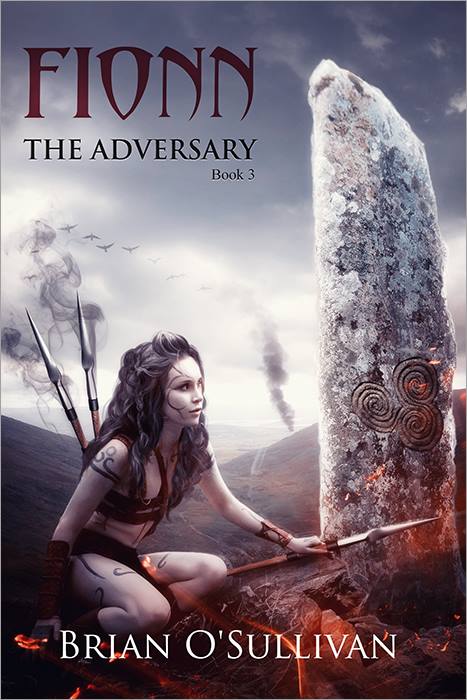
I got a bit of a shock today when a ‘Facebook Memory’ post alerted me to the fact that it was seven years since I’d published Fionn: The Adversary.
After that initial shock – and suddenly feeling very, very old – I was slightly mollified (and relieved) when I worked out that the post was actually referring to the online publication of the ‘cover image’ rather than the publication of the book itself … a mere (cough!) five years ago.
Despite the time that’s passed since publication, I do recall feeling a great sense of relief when I finally pressed the ‘release’ button and sent the finished product out into the void. As the third book in the series, Fionn: The Adversary completed the first of the two plot arcs I’d envisaged but it was something of a hard one to write due to the numerous plot lines and characters (and, of course, overlaps with the Liath Luachra Series where I had to be careful not to give too much away). It was also the last book I published with the limited stock photos I had available at the time (although the artist did a very good job in making it look far better than it probably should have).
Still, the post was an effective reminder that it has been a substantial time since I released anything in the Fionn mac Cumhaill Series and that it was well due another story. Fortunately, I can say that the next (the fourth in the series) will be out before Christmas. At this stage, I don’t have a working title but there will be more news in two to three months or so.
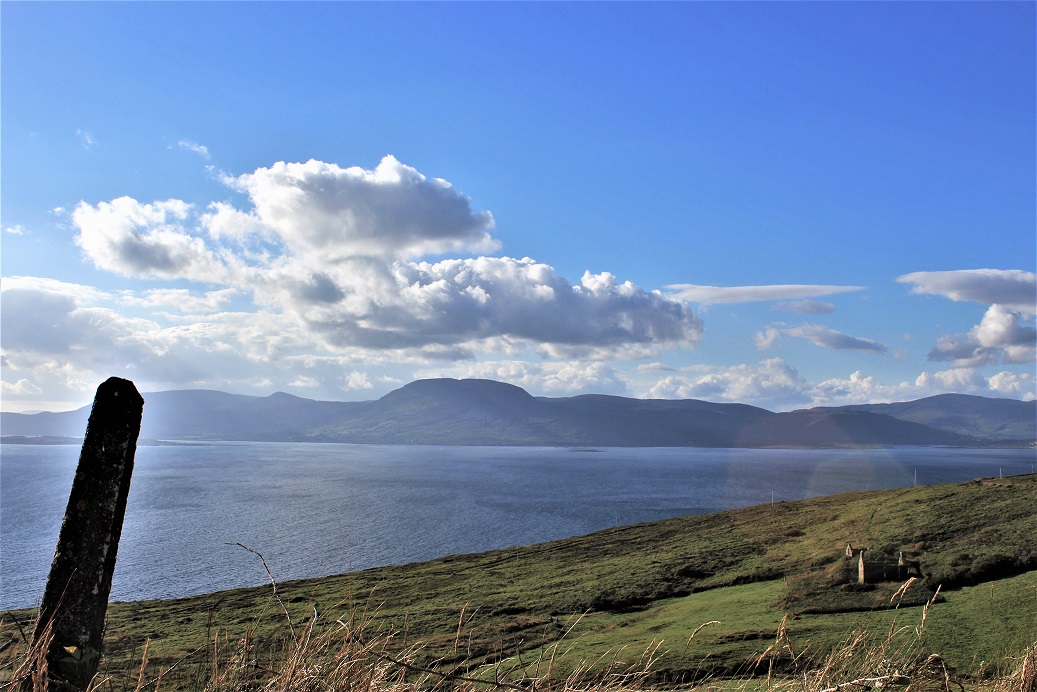
Looking across to Beara from the Sheep’s Head peninsula with ‘Cnoc Daod’ glowering under the central clouds. The name ‘Cnoc Daod’ can be roughly translated as ‘the quick tempered hill‘ (relating to the weather and its ability to turn bad fast). Back in the day, the name was anglicized to ‘Hungry Hill’ (and there’s an old – not sure how credible – story explaining that) which I personally refuse to use.
Interestingly, there was a film made in 1946 based on Daphne du Maurier’s bestselling novel ‘Hungry Hill’ (ironically, shot in Wicklow) – based on two Irish families feuding over a copper mine on the hill. By all accounts, it’s pretty bad, factually wrong on most counts and “oh, so, very Oirish” – in other words, a typical foreign representation of Ireland and Irish stories. From the poster, I get the impression this was an attempt to cash in on the success of ‘Gone with the Wind’.
I’m looking forward to heading back to Beara in the next few months. While I’m there, I’ll be working on an outline for a potential television series based on the Beara Trilogy books. I’m not overly convinced that’s ever going to happen but it’ll help me prepare for when I get back to writing ‘Beara: Cry of the Banshee’.
Pleased ot say, I finally have a plan in that regard.

It’s almost a year to the day since ‘Dark Dawn’ – a free, online interactive project based on the Irish mythological Fenian Cycle was released online. Although produced on a shoe-string budget over the initial chaos of the 2020 Covid pandemic, the final product remains quite strong and garnered some very favourable reviews
Shortly after it’s release, unfortunately, I came down with a bug that prevented any marketing or any further work on the project but, Shortly after it’s release, unfortunately, I came down with a bug that prevented any marketing or any further work on the project but, for anyone who wants to give it a try, the story remains free online HERE:
I’m very grateful to Nate Aubin from ‘Grimdark Magazine’, Mike McGrath-Bryan from the ‘Irish Examiner’ and all other reviewers
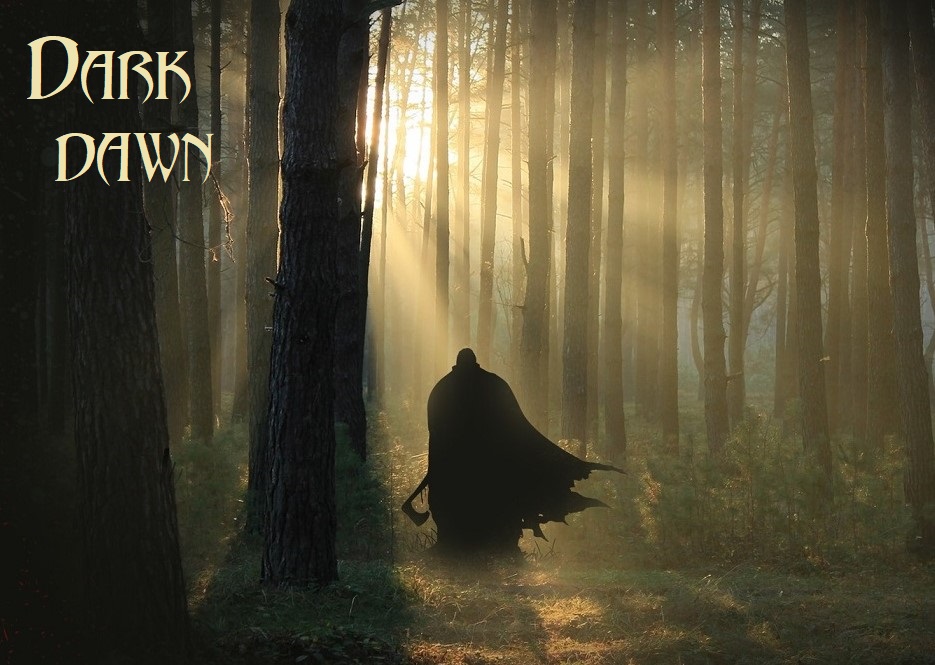
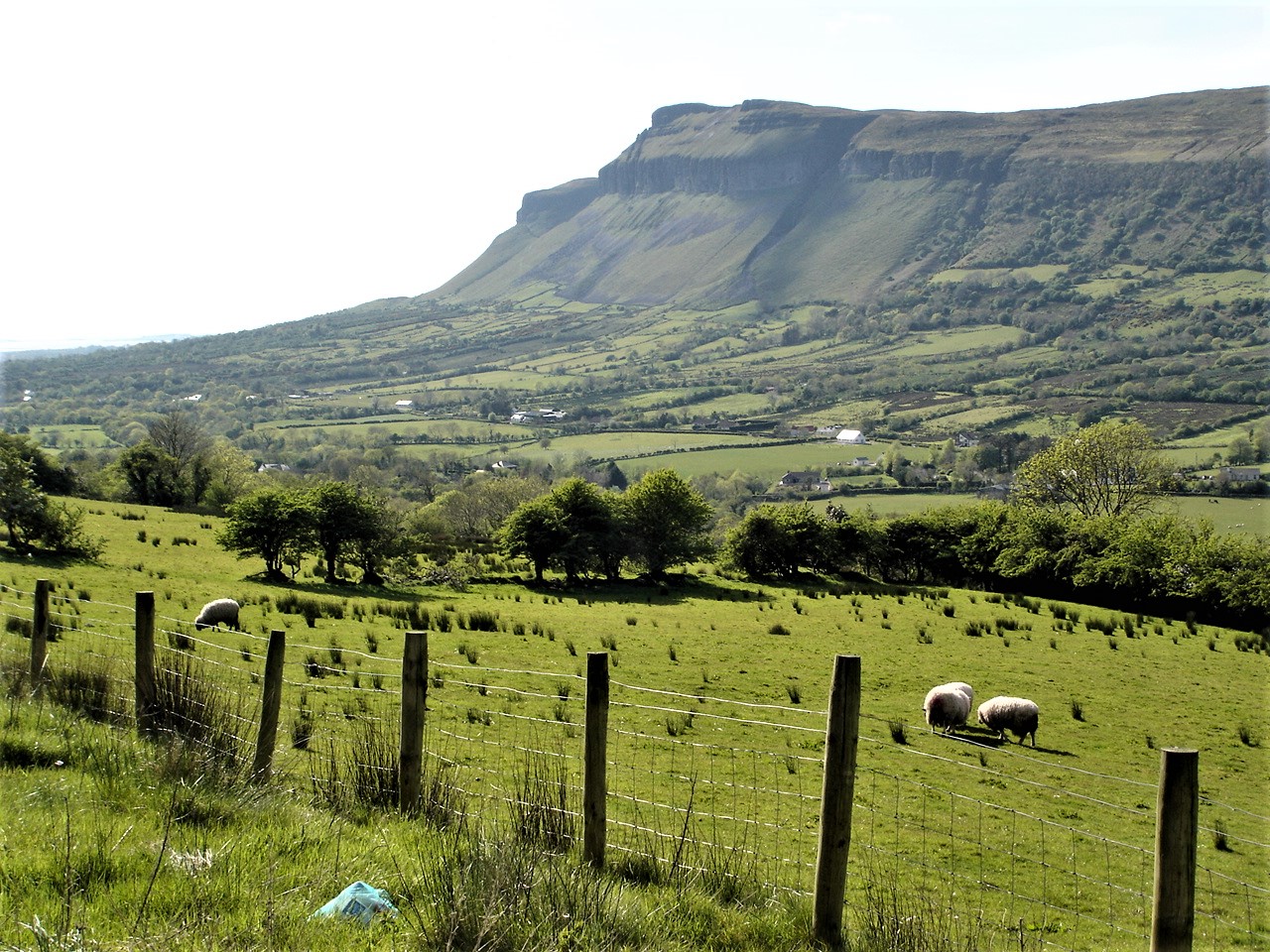
Most striking topographical sites have mythological stories associated with them so it’s no real surprise to find so many linked to the dramatic silhouette that’s Binn Ghulbain – the peak of Gulbain (there’s still a lot of disagreement around what ‘Gulbain’ refers to, but it’s far better than the anglicized – and meaningless – ‘Benbulben’).
The Fenian Cycle has several tales associated with that mountain including the climax to ‘Tóraíocht Dhiarmada agus Ghráinne’ and, of course, Fionn’s encounter with Sadhbh.
I’m still scoping out how much of the Fenian Cycle stories I’ll cover through my ‘Fionn’ Series (and another I hope to do once I’ve completed that) so I’m not sure if I’ll incorporate these stories or not. Producing more culturally authentic versions of the story (i.e. not the sterilized and anglicized versions we were taught as children) means a number of the more common variants of these stories are difficult or unsatisfying to adapt for contemporary audiences.
But it’s certainly not for want of material.
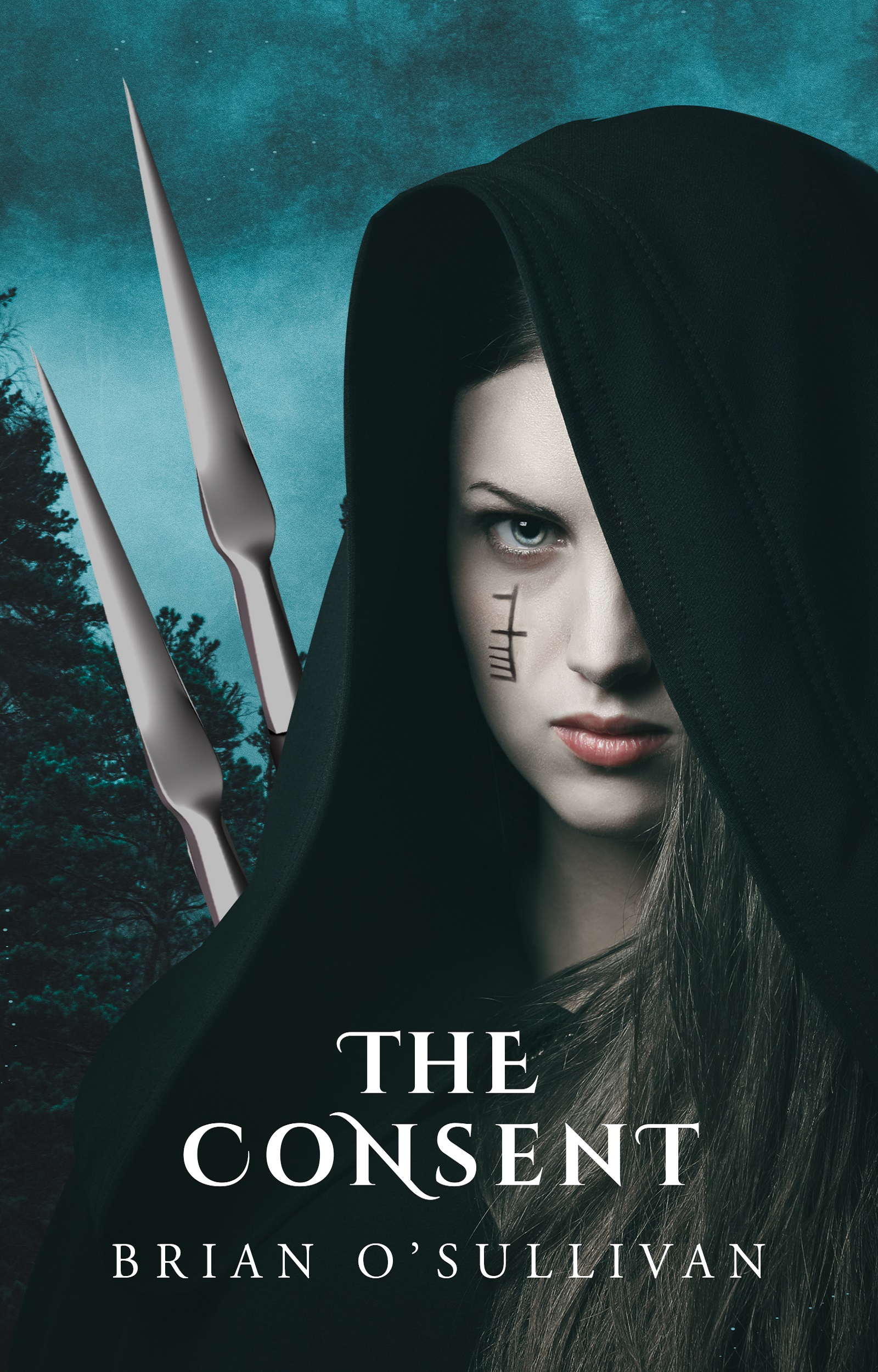
Not all ‘OLD’ friends are ‘GOOD’ friends!
Liath Luachra: The Consent is now available … but only here at the Irish Imbas website.
You can find it on the ‘Books’ Page of by linking through HERE:

This crannóg (known as Coolanlough Crannóg) has had a rough time of it. It’s believed to date back to the 1600s and was supposedly built and inhabited by the McDonnells who had territory on Fair Head (where the crannóg is located).
A very defensible site, back in the day, it also had a stone wall that surrounded it’s exterior.
In Penal times, it’s isolated location meant it was used for Catholic masses but that came to an abrupt close when the boat going out to it was overloaded with the clergy and worshipers, and tipped over. Apparently, quite a few of them drowned.
Years later, the crannóg actually caught fire and the soil making up much of the wall burned well, which is why it’s so small today.
I was actually visiting this site when I decided to set the next book (The Metal Men) on a crannóg.

I’m pleased to announce that the fourth book in the Irish Woman Warrior Series is now live at the Irish Imbas website and most ebookstores. You can find the various links HERE
The price will remainat $4.99 for the rest of the month but will go up to $5.99 next month.
Liath Luachra: The Metal Men continues the story of a traumatised woman warrior’s ongoing efforts to survive in the brutal, world of first century Ireland. The main character – Liath Luachra – is based on a 12th century reference from Ireland’s famous ‘Fenian Cycle’ mythology.
You’ll find that my books might differ slightly from other books related to Irish Mythology. The reason for this is that when you come across ‘Irish mythology’ in English fiction, a lot of it tends to reflect an Anglocentric interpretation of Irish culture – that is, one that bears little real or meaningful similarity to its supposed source.

With most of my own books, therefore, I try to tell Irish stories – in English – from a more authentic ancient Irish/Gaelic slant. In doing this, I not only use the available historical information (and current academic theory) but draw on my own personal Irish language and cultural concepts as well.
The Metal Men marks a particulalry interesting challenge for me in that I was keen to present an international incident (occurring in the 1st century) from the unique perspective of the native Irish. When it came to introducing a foreign culture on ancient Irish soil therefore, I attempted to tell the story from a viewpoint of how ‘native’ people in first century Ireland might have viewed that culture and interpreted the behaviour of its people. I don’t think any other Irish author has attempted this before, so it’ll be interesting to see how readers respond.
Bain sult as! / Enjoy!
The back cover summary is as follows:
“Everything the Hungry People devour has the taste of ‘more’”!
As the harrowing pursuit of a mysterious raiding party draws to a close, the woman warrior Liath Luachra prepares her war party for one final onslaught.
But out in the Great Wild, even the best laid schemes rarely go as planned.
The south-eastern forests hide threats more dangerous than raiders, Liath Luachra’s alliances are foundering, and her own personal history risks upending her existence forever.
Just as she faces a challenge her world has never encountered before.

I really enjoy writing dialogue – particularly when it’s a dialogue between two strong characters with diferent motivations. This is a quick sample of a conversation between the woman warrior Liath Luachra and the bandraoi (female druid) Bodhmhall, who joined her hunt for a díbhearg (raiding party) in a slightly underhand manner. At this point in the story, neither character really trusts the other and that puts a nice tension in their interactions. This particular piece comes from Liath Luachra: The Metal Men which comes out tomorrow.
The converation occurs after a meeting to discuss the continued pursuit of the díbhearg.
A Conversation with Bodhmhall
With Crimall off reviewing the guards, it was Bodhmhall who represented Clann Baoiscne interests around the fire, sidling up silently to remain standing in the background and listening without comment. When the fénnid finally finished his story and the others started to drift away, she moved to approach the warrior woman, who’d seated herself on a fallen, moss-coated tree trunk a short distance from the others.
‘All power to you, Grey One.’
Liath Luachra eyed the bandraoi without warmth. Having spent the better part of the evening preparing defences for the campsite to counter a sneak attack by the díbhearg – a possibility she couldn’t ignore – she was tired and brittle and ready to sleep.
‘Your plan to find the díbhearg trail sowed the makings of success. To reap its bounty is your just reward.’
Reluctant to be snagged in further conversation, Liath Luachra let the compliment slide by without comment, however the bandraoi settled easily onto the trunk alongside her. She cleared her throat with a delicate sound, her refined and polished demeanour looking a little more ragged after several days of hard travel.
‘In truth, I didn’t like your plan. At the time, I didn’t believe it had the makings of success.’
This time, the woman warrior eyed her in muted surprise. ‘And yet you supported it.’
The bandraoi acknowledged that truth with a wry, slightly sardonic laugh. ‘I suppose I liked the alternative even less.’
A brief lull followed this forthright admission. Despite the lengthening silence however, the Clann Baoiscne woman showed no inclination to leave. Liath Luachra scowled.
‘Why are you here, Bodhmhall? Your warning in Murchú’s regard was appreciated, but we are not friends. Distrust, between your family and I, runs too deep.’
The bandraoi remained silent as she considered the woman warrior’s response. Finally, she terminated that quiet deliberation with a sigh.
‘Given your experience of Dún Baoiscne hospitality, I can understand your grievance, Grey One. And, yes, I acknowledge the loathing my father holds in your regard.’ The bandraoi winced. ‘Actually, he bears you a measure of hatred I’ve ever only seen directed against his most gruesome enemies …’
Liath Luachra gave a dismissive sniff. Tréanmór’s hostility held little interest for her. She was unlikely to encounter the rí of Clann Baoiscne again.
‘I suspect,’ Bodhmhall continued, ‘my father’s hatred stems from the fact he’s so rarely bested. When you defeated Cathal Bog, you upended the plan he’d orchestrated for your humiliation and turned it back on him instead. That took my father by surprise. That took everyone by surprise …’ The bandraoi paused then, as though struck by a sudden realisation. ‘Myself included.’
The Clann Baoiscne woman drew back a little, eyeing Liath Luachra with greater attention. ‘In truth, it confounds me to have overlooked someone of your complex potential.’
‘I’m surprised your tíolacadh revealed no raging blaze,’ the Grey One answered, and although her words were laden with sarcasm, Bodhmhall didn’t seem to take offence.
‘There’s truth in that,’ she conceded with grace. ‘Then again, you had me at a disadvantage when we first crossed paths.’
Liath Luachra regarded her carefully. She had no memory of meeting the bandraoi prior to her sly infiltration of the fian. ‘When we first crossed paths?’
‘At Dún Baoiscne. In the gateway passage. You were on your way to fight Cathal Bog.’
Liath Luachra studied the Clann Baoiscne woman’s features with new interest. She vaguely recalled another presence within the gateway passage at that time but, focussed on her imminent combat with the Clann Baoiscne champion, she retained no clear mental image of the encounter.
Bodhmhall patiently endured the scrutiny until the woman warrior finally shook her head.
‘I don’t remember you.’
To her surprise, the bandraoi chuckled at that. ‘Ah, you wound my vanity, Grey One. Am I so easily forgotten?’
‘I haven’t forgotten you’ve not told me what you want.’
The bandraoi frowned then, a new tightness of her lips suggesting a subtle reassessment.
‘Very well. I’ll spare you words daubed with winter honey. What I seek is forthrightness, forthrightness on the díbhearg we pursue. It seems to me that you’ve a greater familiarity with the raiders than you cared to admit to my brother – that, at least, is my sense of the matter. This pursuit is meant to be a shared endeavour between our two fianna towards a common purpose. In the spirit of that arrangement, I’d ask for a sharing with respect to the díbhearg’s true motivations.’
Only years of emotional compression allowed the woman warrior to conceal her true astonishment as she returned the bandraoi’s gaze. Behind that cool veil of impassivity however, she struggled to suppress a growing swell of panic. The Clann Baoiscne woman’s startling perspicacity had caught her completely by surprise and it was an abrupt and frightening revelation of just how dangerous she truly was. Crimall and Tréanmór might possess shrewd instincts that were enhanced by their ambition but Bodhmhall, with her piercing intelligence and An tíolacadh, was on level that far exceeded them.
The Grey One put her bowl aside softly and offered the ghost of a haughty shrug. ‘Given your reputed talent with imbas forosnai, I’d have thought you better placed than I to know the díbhearg motivations. Crimall certainly holds your Gift in great reverence and the Druidic Council are constantly at pains to assure us of the mystical glimpses An tíolacadh provides.’
Bodhmhall responded to the deflection with a bright smile but there was a subtle tension to her features that she couldn’t completely disguise. Behind her assured façade, it seemed the bandraoi had secrets of her own and the imbas forosnai ritual looked to be a topic she was reluctant to broach.
To the Grey One’s surprise, Bodhmhall abruptly rose to her feet. Although it appeared at first that the Clann Baoiscne woman intended to stalk away, she stood watching the woman warrior, the flickering of the fire casting a strange set to her features.
‘Sadly, on certain subjects Crimall tends to greater conviction for things he’d like to be true than in the truth itself. The reality is that An tíolacadh’s not a Gift so much as a burden. That’s doubly so with the imbas forosnai ritual, despite what Na Draoithe would have you think.’
She paused then, and Liath Luachra regarded her warily for there’d been a weary honesty to the response she hadn’t anticipated. More importantly, there’d also been a tacit acknowledgement in the bandraoi’s eyes, a kind of diplomatic retreat or implied agreement not to pry into the woman warrior’s secrets if she chose to respond in kind.
The bandraoi made to leave but then paused in mid-step, turning to consider the woman warrior over her right shoulder.
‘I’ve told you the full truth of why I’m here, Grey One. Perhaps you’d reciprocate that with frankness of your own. Why are you here? It’s obvious you take no pleasure in leading this Seeking.’
‘There’s no secret to that, Bodhmhall. I’m here because Murchú asked for my help.’
‘For your help.’
‘To rescue his sister and deal to her abductors.’ She hesitated. ‘And perhaps to kill some ghosts of my own.’
‘You cannot kill a ghost, Grey One.’
‘Perhaps not, Bodhmhall. But I will surely give the matter my best efforts.’
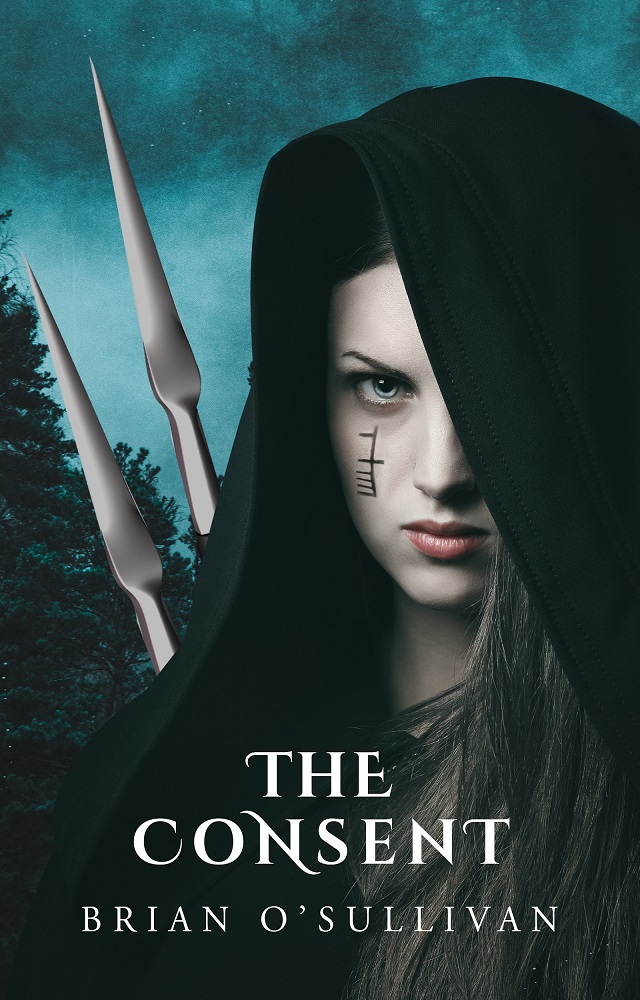
One plotline that I’d hoped to return to in more detail with ‘The Metal Men’ was Liath Luachra’s relationship with Bressal Binnbéalach – Bressal of the Sweet Tongue – her old rígfénnid and sly ex-leader of Na Cinéaltaí.
The interaction between Liath Luachra and Bressal was always one of my favourite elements from the first book in the series (Liath Luachra: The Grey One) and it’s a relationship I’ve always intended to go back and explore a little further. Unfortunately, the subsequent plotlines meant that wasn’t really feasible.
Over the course of writing ‘The Metal Men’, I wrote about two chapters on this, but, in the end, as the story already had enough plotlines, I culled those sections from the text. Instead, I started writing a ‘long’ short story called Liath Luachra: The Consent, which focusses on Liath Luachra’s promise to obtain Bressal’s consent to undertake the Seeking (one of the conditions required by the Uí Loinge, in Liath Luachra: The Seeking).
This is a separate story which takes place after the events in The Metal Men. It’s not critical for anyone following the series. For that reason, I’ve intentionally kept it separate and, as a result, it’s only available at the Irish Imbas website.
The story is still unfinished (about 13,000 words) but the plan is to have it completed for around the 16th March so that anyone who wants it after they’ve read ‘The Metal Men’ can get it. Work permitting, I’ll get this out to Patreon patrons before then.
The draft blurb is as follows:
Ireland: 1st century A.D. A land of tribal affiliations, secret alliances and treacherous rivalries.
Although ‘The Seeking’ is complete, to fulfil her word to the Uí Loinge Elders, Liath Luachra must reconnect with Bressal Binnbéalach – the previous leader of Na Cinéaltaí – and obtain his consent.
But Bressal hasn’t forgotten her actions against him at Dún Mór.

Liath Luachra: The Metal Men (4th book in the Irish Woman Warerior Series) is now complete. I’m currently working with the artist to get the final covers sorted but all looks good for the planned release in March (patrons will get it earlier).
I’m really pleased with the final result.
The new back cover blurb is below.
“Everything the Hungry People devour has the taste of ‘more’”!
As the harrowing pursuit of a mysterious raiding party draws to a close, the woman warrior Liath Luachra prepares her war party for one final onslaught.But out in the Great Wild, even the best laid schemes rarely go as planned.
The south-eastern forests hide threats more dangerous than raiders, Liath Luachra’s alliances are foundering, and her own personal history risks upending her existence forever.
Just as she faces a challenge her world has never encountered before.
Liath Luachra: The Metal Men is the fourth book in the Irish Woman Warrior Series and continues the story of the traumatised woman warrior’s ongoing efforts to survive in the brutal, world of first century Ireland. The main character – Liath Luachra – is based on a 12th century reference from Ireland’s famous ‘Fenian Cycle’ mythology.

I have two books coming out this year which I’m hoping will create a gentle seismic shift around Irish culture and how Irish mythology is understood and portrayed. Both, however, are very different.
The first (Liath Luachra: The Metal Men) is ‘historical fiction’ but it’ll be taking Irish mythological fiction narratives to a place they haven’t been taken before (and hopefully amend some misconceptions along the way).
This will be released on 16 March 2022.
The second (the working title is ‘Irish Mythology:The Fundamentals) is non-fiction and is intended to be the definitive book explaining how Irish mythology (and other mythology) works and should be utilised. This one is anticipated to create a lot of reaction. The proposed release is October 2022.
One way or the other, I suspect this will be an interesting year.